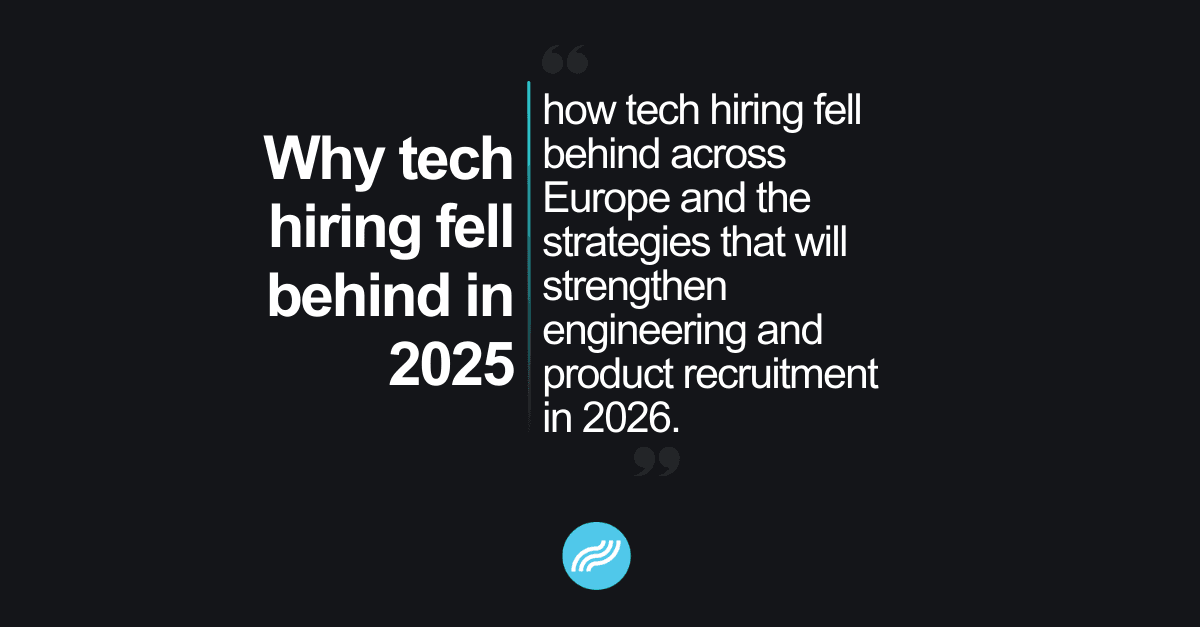Nov 3, 2025
Tech/AI recruitment glossary: The essential terms for hiring managers & TA leaders
In our ever-changing and fast-moving AI/tech recruitment world, whether you’re looking for Senior AI Engineers, Conversational Designers, Python Developers or Product Managers focused on voice-AI, the vocabulary matters.
When you talk the same language as candidates and hiring teams, you shorten the time-to-hire, improve alignment and elevate your employer brand. Below are the key terms you need in your toolkit.
Key terms & What they mean
Artificial Intelligence (AI) – Systems and software that perform tasks typically requiring human intelligence: learning, reasoning, decision-making. In recruitment: identifying patterns, automating screening and sourcing.
Machine Learning (ML) – A subset of AI where systems improve from experience/data without explicit programming. For TA: matching candidates based on historical hire success, predicting attrition.
Deep Learning (DL) – A further subset of ML that uses neural networks (many layers) to process large volumes of unstructured data such as language, images or video. Used in sophisticated screening/voice-AI roles.
Natural Language Processing (NLP) – The branch of AI that enables machines to interpret, generate and respond to human language. For roles like Conversational Designer and voice-AI Product Manager, understanding NLP is key.
Large Language Model (LLM) – A transformer-based model trained on large text corpuses; can understand and generate human-like language. In hiring: can power chatbots, generate job descriptions, summarise CVs.
Generative AI (GenAI) – AI that creates new content (text, code, images, audio) based on learned patterns. For tech/AI recruitment, this could mean auto-writing job ads, candidate outreach messages or generating role-specific case studies.
Algorithmic Bias – When AI/ML systems produce unfair or discriminatory outcomes because of biased data, flawed design or inadequate oversight. Critical for TA teams when deploying AI tools to ensure fairness in senior engineering/product hiring.
Predictive Analytics – Using historical data + ML to forecast outcomes like time-to-fill, candidate success, attrition risk. Important for hiring managers planning for scale in AI teams.
Semantic Search – An AI-powered search method that looks at meaning/intent, not just keywords. For example, sourcing a “Python developer – backend services” and finding someone experienced in “microservices using Python & Django” even if the exact phrase isn’t used.
Human-in-the-Loop (HITL) – A model where human experts supervise, correct or override AI decisions. In recruitment, while AI can screen or match, human judgement remains essential especially for senior roles like Head of Engineering or AI Lead.
Candidate Experience (CX) – The full journey a candidate goes through, from first touchpoint to onboarding. With AI tools like chatbots, personalised outreach and automated scheduling, TA teams can significantly improve experience.
Skills-Based Hiring – Instead of focusing solely on degrees/years of experience, this approach values demonstrable skills and ability, especially relevant in AI, data and engineering roles where the field moves quickly. Recent research shows this shift gaining traction.
Applicant Tracking System (ATS) – Software system used to manage job ads, candidate applications, workflows, pipelines. Many modern ATS platforms now embed AI features like semantic matching and CV parsing.
Conversational AI – Systems designed to mimic human conversation (via voice or text), often powered by NLP and LLMs. For voice-AI product roles or conversational designer positions this is a core domain.
Explainable AI (XAI) – AI systems that allow humans to understand how decisions were made (why candidates were rated, flagged, etc.). Important for compliance, trust and fairness in recruitment.
RAG (Retrieval-Augmented Generation) – Combines retrieval of relevant documents/data with generation (LLMs) to produce more accurate, context-aware results. Useful in screening resumes or sourcing niche engineering talent.
Talent Intelligence – Using AI and data to gather, analyse and visualise workforce, market and talent-pool data. Supports proactive hiring, competitor mapping and strategic workforce planning.
Why this glossary matters for Recruitment & Hiring managers
When you’re recruiting senior roles in AI and tech, Senior AI Engineers, Data Scientists, Python Developers, Product Managers (Voice AI), Head of Engineering, Conversational Designers, you’re operating in a market full of jargon, shifting skill-sets and high expectations. If you don’t speak the language, you risk:
Mis-matching role briefs with candidate skills
Failing to engage passive talent who know the domain language
Selecting tools without understanding their implications
Missing out on high-quality hires because your process feels behind the curve
By integrating this vocabulary into your recruitment strategy, you improve communication with hiring teams, align better with candidates, select and use technology more effectively, and ultimately hire faster and smarter.
In the dynamic world of AI, engineering and product leadership, the talent game is won not just by attraction, but by understanding. Understanding the technology. Understanding the skills. Understanding how recruitment must adapt.
With a clear glossary and common language, your TA team and hiring managers will be better equipped to source, screen and secure the talent that will power your next phase of growth.
If you need support defining role-specific skills, scoping senior AI hires, or building a hiring campaign using this tech-savvy language, we’re here to help at Tides Digital.
Articles




